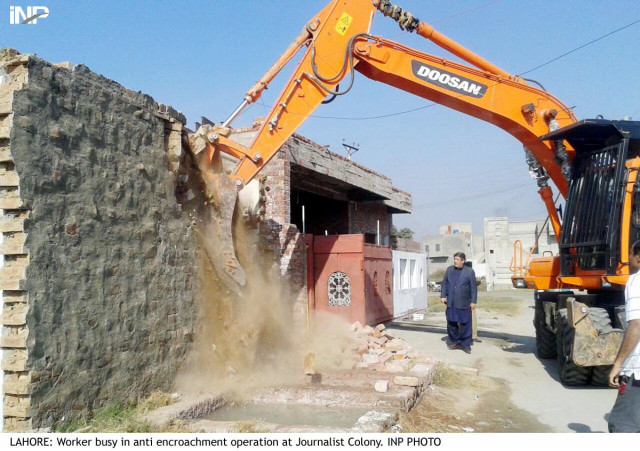Land mafia of Punjab
And what is this land mafia anyways?

PHOTO: INP/FILE
Let me explain how illegal occupation or qabza works, which may take many forms. The first category relates to disputes between private parties, where either party occupies a property without rightful title. The second category is encroachment, where an occupant rightfully owns a property but illegally extends its boundary. These two categories however do not typically fall within the ambit of land mafia.
NAB Rawalpindi distributes Rs13.14m among victims of illegal housing schemes
The term ‘land mafia’ is widely used for bands of goons, often protected if not directly employed by politically influential people, who operate with connivance of the police, land revenue officials and lawyers. They either illegally occupy disputed private properties or just grab rural or urban state land. The latter, as it turns out, has been easier owing to the poor writ of the state.
In some cases, the occupants are old leaseholders of agricultural or commercial land, whose leases expired decades ago.
The rural state land may belong to the Board of Revenue, Forest, Irrigation or any other department and once occupied, is usually used for contract farming, leading to lucrative proceeds for illegal occupants. The model works a bit differently for urban land, where the occupants often use squatters to create makeshift katchi abadis or in some cases even build a madrassah or a mosque to solidify their claim. Once the claim is established, the occupants start building shops and other commercial establishments to turn the property into a source of profit.
Ironically, despite computerisation of land records, there is no comprehensive database of state land readily available, let alone a system to protect such land from illegal occupation.
Past efforts to recover illegally occupied land have been mostly limited to removing encroachments, while the land mafia always escaped previous governments’ attention. However, this changed recently, thanks to the Supreme Court taking cognisance of the Mansha Bomb case, directives of the Lahore High Court and the government’s Clean and Green Punjab programme.
Anti-encroachment committees, formed in every district, are undertaking indiscriminate enforcement, based on hurriedly compiled lists of illegally occupied properties. These lists are growing by the day as more state properties are being discovered. But so far these committees have stayed clear of katchi abadis and residential quarters to avoid political backlash or a law and order situation. Judicial cooperation in this regard has also helped, with no frivolous stay orders being issued.
Employment opportunity: Encroachment removal reaps windfall for masons
Credit must be given to the present government for reclaiming illegally occupied state land in an unprecedented move. But there has been no effort to fix responsibility for those who allowed it to happen. GIS maps from the past few years could be used to ascertain when these were occupied, at least in some cases. Even if a handful of high-profile cases are taken to their logical end, leading to accountability for those responsible, it will go a long way in discouraging such behaviour in future.
Furthermore, the government should develop a publicly available land bank of state properties, use a GIS-based system to regularly track any unusual activity, take stern action and develop a plan to use or dispose of these properties. Otherwise, in the absence of a structured process to track, preserve and use these properties, these are likely to go back in the same hands in due course.
Published in The Express Tribune, October 30th, 2018.
Like Opinion & Editorial on Facebook, follow @ETOpEd on Twitter to receive all updates on all our daily pieces.















COMMENTS
Comments are moderated and generally will be posted if they are on-topic and not abusive.
For more information, please see our Comments FAQ